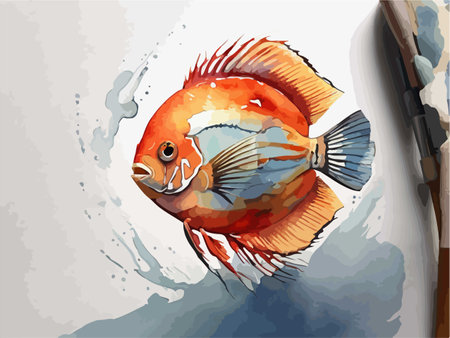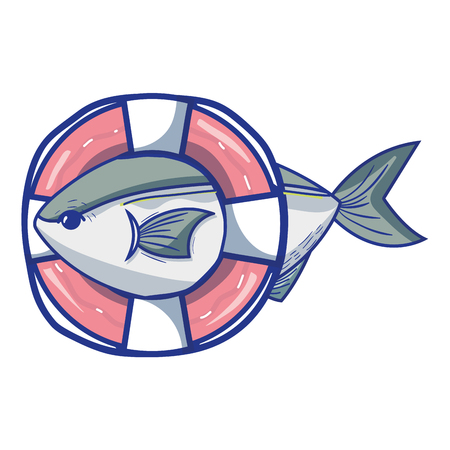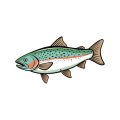Introduction: Beach Reading for Successful Surf Fishing
When it comes to surf fishing, there’s a secret superpower that separates the casual cast from the unforgettable catch—reading the beach. Whether you’re a seasoned angler or introducing your kids to their first striped bass, knowing how to interpret the subtle clues of the shoreline is key to both your success and your family’s fun. Imagine stepping onto the sand and instantly spotting where fish are likely feeding, understanding how the tides shape your chances, and confidently choosing the perfect spot to settle in for an afternoon of adventure. Mastering this skill not only boosts your odds of bringing home dinner but transforms every beach trip into an interactive learning experience for everyone. In this guide, we’ll explore why reading the beach matters so much for surf anglers and how it can turn ordinary outings into memorable family stories filled with excitement, teamwork, and a deeper connection with nature.
Understanding Beach Structures: Cuts, Troughs, and Sandbars
If you want to consistently find fish while surf fishing, learning how to “read” the beach is key. The ocean might look like one big playground, but beneath those rolling waves are hidden features that attract fish—especially around cuts, troughs, and sandbars. Knowing how to identify these structures will help you target productive spots and increase your chances of landing a catch.
What Are Beach Structures?
Let’s break it down: the shoreline isn’t just a smooth slope into the sea. Waves and currents constantly shape the beach, creating underwater “landmarks” that fish love to use for feeding and shelter. Here’s a quick overview:
| Structure | Description | Why Fish Love It |
|---|---|---|
| Cuts | Narrow gaps in sandbars where water flows back out to sea | Act as “fish highways”—bait and predator species funnel through here |
| Troughs | Long depressions running parallel to shore between sandbars or the beach and first sandbar | Shelter from crashing waves; perfect ambush spots for hungry fish |
| Sandbars | Raised areas of sand offshore, sometimes visible at low tide or when waves break farther out | Baitfish gather here; predators patrol the edges looking for an easy meal |
How to Spot Cuts, Troughs, and Sandbars
It’s easier than you think—even if you’re new to surf fishing! Look for these signs next time you visit the beach:
- Cuts: Watch for places where waves break unevenly or water looks darker and deeper as it returns seaward. These are often channels (cuts) through the sandbar.
- Troughs: At low tide, look for shallow dips close to shore that fill with water as the tide comes in. The water may appear calmer or slightly darker.
- Sandbars: Notice where waves start breaking further out before they reach shore. This usually means there’s a sandbar underneath causing the wave to crest.
Why Focus on These Spots?
Cuts, troughs, and sandbars create natural funnels for baitfish—and wherever bait gathers, larger fish follow. If you’re bringing kids along or teaching someone new, try walking down the shoreline together at low tide. Point out areas where the water changes color or waves break differently. It’s a fun way to turn beachcombing into a fish-finding adventure!

3. Tides, Waves, and Water Movement
If you want to catch more fish from the shore, understanding how tides, waves, and water movement affect surf fishing is a total game changer. Let’s explore these elements—almost like reading nature’s secret language together with your kids—and see how they tell us where and when fish are most likely to bite.
The Magic of Tides
Tide changes are one of the biggest factors in surf fishing success. As the tide rises (incoming or flood tide), water floods over sandbars and into deeper troughs, bringing in baitfish and attracting hungry predators right up to the shoreline. This is often the best time to cast out, especially about two hours before and after high tide. On the flip side, during outgoing (ebb) tides, fish may follow receding water back out, so look for spots where channels drain into the ocean—these become fish highways!
Waves: More Than Just Fun for Kids
Wave action stirs up the sand and exposes food like small crabs and sand fleas, which draws in fish such as striped bass or pompano. When you see waves breaking over a sandbar and then calming down as they move into a deeper trough, that trough can be a gold mine for surf anglers. Teach your kids to spot these calmer areas—the places where foam lingers after a wave breaks—because that’s where fish often hang out waiting for an easy meal.
Currents: Nature’s Conveyor Belts
Pay close attention to currents running parallel to the beach or those created by rip tides. These moving waters funnel food and baitfish along predictable paths, which means predatory fish will be close behind. Casting near the edges of these currents can increase your chances of hooking something big. Remember, safety first—never let kids get too close to strong currents!
The Best Times to Cast
Combining these factors helps you pick prime times to fish: usually around dawn or dusk when tides are moving and wave activity stirs up food. Take your family for a sunrise adventure or an early evening stroll on the beach with your rods—you’ll not only teach them how to read the water but also make lasting memories together.
4. Reading Clues: Birds, Baitfish, and Other Signs of Life
When you’re out surf fishing with your kids or friends, learning to “read” the beach goes beyond just watching the waves. One of the best ways to spot productive fishing spots is by observing the natural signs around you—especially birds, baitfish, and other visible marine activity. These clues are like nature’s hints, letting you know where the big catches might be hiding.
Why Watch for Birds?
Birds are some of the most reliable indicators of fish activity in the surf. When you see gulls, terns, or pelicans diving repeatedly into one area, it often means there’s a school of baitfish near the surface—and where there’s baitfish, predator fish aren’t far behind! Watching bird behavior can turn a slow day into an unforgettable one for your family.
Spotting Baitfish Schools
Baitfish schools are another giveaway that bigger fish are close. Look for shimmering patches in the water or small ripples moving against the current. Sometimes you’ll even see baitfish leaping out of the water as they try to escape hungry predators below.
Other Natural Signs to Watch For
Besides birds and baitfish, there are other subtle clues that point to good fishing spots:
| Sign | What to Look For | What It Means |
|---|---|---|
| Surface Disturbances | Bubbles, splashes, or unusual ripples | Predatory fish chasing bait near shore |
| Color Changes in Water | Darker or murky patches vs. clear areas | Indicates deeper holes or bait activity |
| Scent in Air | Strong fishy smell along certain stretches | Baitfish schools nearby attracting larger fish |
| Mullet Jumps | Mullet leaping above water surface | Pursuit by predator fish like bluefish or striped bass |
Tips for Spotting Nature’s Clues on Your Next Family Outing:
- Bring binoculars: They help you scan for diving birds from afar without disturbing wildlife.
- Stay observant: Walk slowly along the shore and watch for sudden bird activity or fish movement.
- Include your kids: Turn it into a fun game by asking them to be on the lookout for “clues” that might signal a bite.
- Be patient: Sometimes signs appear suddenly—don’t rush; enjoy watching nature unfold together.
- Ask locals: Chat with seasoned anglers about recent sightings—they often have great tips about what to watch for at your local beaches.
A Family-Friendly Approach to Surf Fishing Success
The more time you spend observing these natural cues with your family, the more confident you’ll become in picking out hot spots from just a glance at the shoreline. Every outing becomes not just about catching fish but also about discovering how vibrant and connected our coastal ecosystems really are.
5. Family-Friendly Surf Fishing: Involving Everyone
One of the most rewarding aspects of surf fishing is turning it into a family adventure. Not only does it get everyone outdoors, but it also creates wonderful learning opportunities for kids and adults alike. Here’s how you can make reading the beach and surf fishing an engaging, memorable activity for the whole family—no experience required!
Encourage Curiosity and Observation
Start by getting your kids involved in “reading the beach.” Challenge them to spot clues such as groups of birds diving into the water, gentle dips in the sand, or areas where waves break differently. Turn it into a game: Who can find the first sandbar? Who spots baitfish jumping near the shore? You’ll be surprised at how quickly children pick up on these subtle signs and feel like part of the action.
Assign Roles for Every Age
Even younger children can take part by holding a small bucket for collecting shells or observing crabs. Older kids can help scout out potential fishing spots, cast lines with supervision, or even keep track of what you catch. Dividing tasks keeps everyone engaged and teaches teamwork, responsibility, and patience.
Create Teachable Moments
Use your time together to explain why certain features—like troughs, rips, or changes in water color—are important. Discuss how tides affect fish behavior or why some birds cluster in specific places. Not only does this deepen their understanding of nature and science, but it also helps them develop practical skills they’ll use for years to come.
Keep It Light and Fun
Remember that the goal isn’t just to catch fish—it’s about enjoying each other’s company and making memories. Pack snacks, bring sunscreen, and celebrate even small successes like finding a good spot or catching a tiny fish. If attention spans wander, take breaks to splash in the waves or build sandcastles before returning to your lines.
Build Lasting Connections
When you involve everyone in reading the beach and choosing where to fish, you transform surf fishing from a solo sport into a shared family tradition. Over time, you’ll notice your kids growing more confident and observant—not just on the beach, but in every outdoor adventure you share together.
6. Safety First: What to Watch for on the Beach
When youre surf fishing with your family or friends, safety should always be your top priority. The beach may look inviting and peaceful, but there are hidden hazards you need to watch out for before you cast your line.
Watch Out for Strong Currents and Rip Tides
Currents can change quickly along the shore, especially near sandbars or inlets where water funnels through narrow spaces. Always check local tide charts and pay attention to posted warning signs about rip currents. Teach kids how to spot areas where waves break unevenly or water looks darker and moves fast—these are often signs of strong currents that can sweep people off their feet.
Slippery Rocks and Unstable Surfaces
Some of the best fishing spots are around jetties or rocky outcrops, but these areas can be slippery from algae, moss, or just wet conditions. Wear shoes with good grip, move slowly, and remind younger anglers not to jump from rock to rock. If a spot looks unstable, it’s better to find a safer place to fish.
Local Wildlife Awareness
The beach is home to all sorts of creatures—from birds protecting their nests in the dunes to crabs hiding under rocks and even jellyfish drifting in the shallows. Teach your family to respect wildlife by watching from a distance and never disturbing animals’ homes. Also, keep an eye out for any warning signs about dangerous species like stingrays or snakes that might be common in your area.
Sun Protection and Hydration
Don’t let excitement over fishing make you forget about sun safety! Pack plenty of sunscreen, hats, sunglasses, and water. Remind everyone to reapply sunscreen regularly and take shade breaks when the sun gets high.
A Family Rule: Always Fish Together
One golden rule we follow is: nobody fishes alone, especially kids! Having a buddy system ensures someone can get help if needed and makes the experience more fun as you share tips and celebrate catches together.
By keeping these safety pointers in mind, you’ll create lasting memories while making sure everyone stays happy, healthy, and ready for another day at the beach.
7. Local Insight: Asking Locals and Using Technology
If you really want to unlock the secrets of productive surf fishing spots, there’s nothing quite like tapping into local knowledge. Friendly conversations with seasoned anglers at the beach, bait shops, or even at your local coffee spot can reveal invaluable tips you won’t find in any guidebook. Most locals are happy to share general advice if you approach them respectfully—just remember, it’s polite not to ask about their exact favorite honey hole! Instead, try asking about seasonal patterns, common baits, or how the tides affect different stretches of the shoreline.
Combining Local Wisdom with Digital Tools
While chatting with locals offers that personal touch, don’t underestimate the power of technology. Apps like Fishbrain, iAngler, and even Google Maps satellite view can help you scout potential hotspots before you ever set foot on the sand. Online forums and local Facebook groups often buzz with recent catch reports and tide updates. Pairing these digital resources with insights from real people helps you make smarter decisions about where—and when—to fish.
Respecting the Local Vibe
The surf fishing community thrives on mutual respect and good vibes. Always show gratitude for any tips you receive, keep shared spots clean, and be mindful not to overcrowd popular areas. Remember, part of being a great surf angler is protecting the resource and sharing the beach with others.
Family Tip
If you’re bringing kids along, encourage them to say hello and ask questions too—surf fishing is as much about community as it is about catching fish! Mixing local insight with modern tools gives your family an edge and makes every beach trip a learning adventure.


